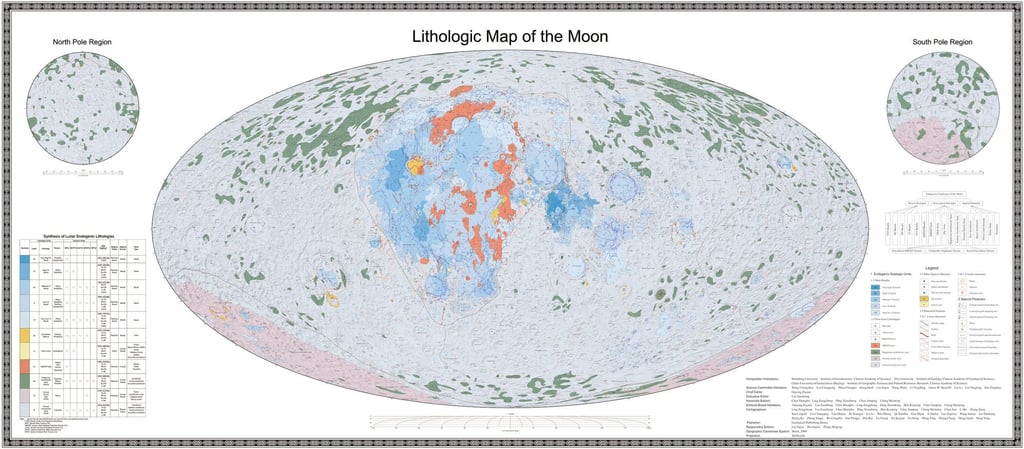China’s ‘exemplary’ new lunar atlas is first moon surface update since Apollo-era programme
- Newly published comprehensive geological maps will point the way for China’s future lunar exploration
- High-definition data will help in landing zone site selection, resource exploration and lunar station planning

The Chinese Academy of Sciences (CAS) said the high-definition maps – published in Chinese and English – will provide up-to-date scientific references for future lunar research and exploration.
“Geology research of the moon is still built upon the lunar geologic atlas developed during the Apollo era. As moon research advances, the existing map can no longer meet the needs of future lunar scientific research and exploration,” the top national scientific institution said in a statement on Sunday.
The new map of Earth’s only natural satellite is provided at a 1:2.5 million scale, compared with the previous scale of 1:5 million, which offered less detail. As well as the geological history of the moon, the map provides information on its 14 types of structures and 17 types of rocks, with labels for 12,341 craters and 81 impact basins.

Co-lead researcher Ouyang Ziyuan, considered the “founding father” of China’s lunar programme, said the maps will also help researchers select a site for a planned lunar station.